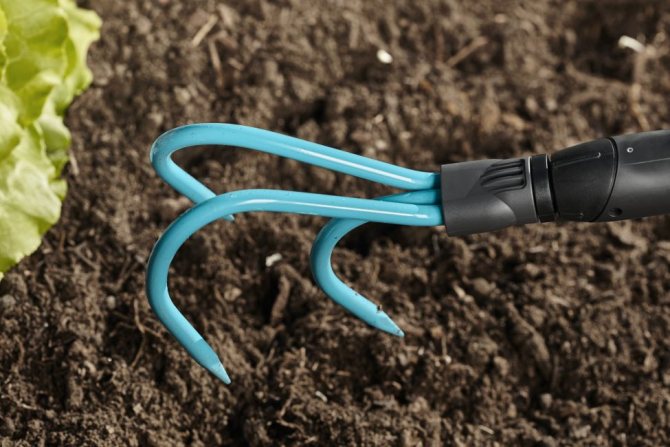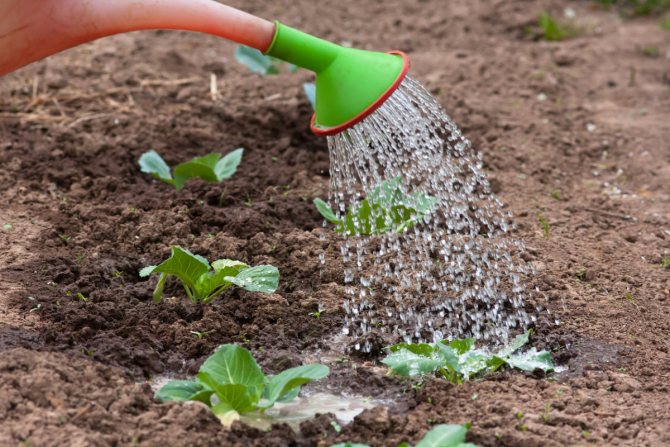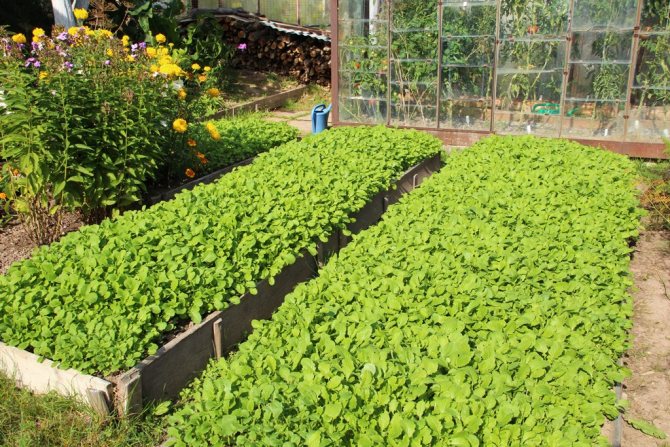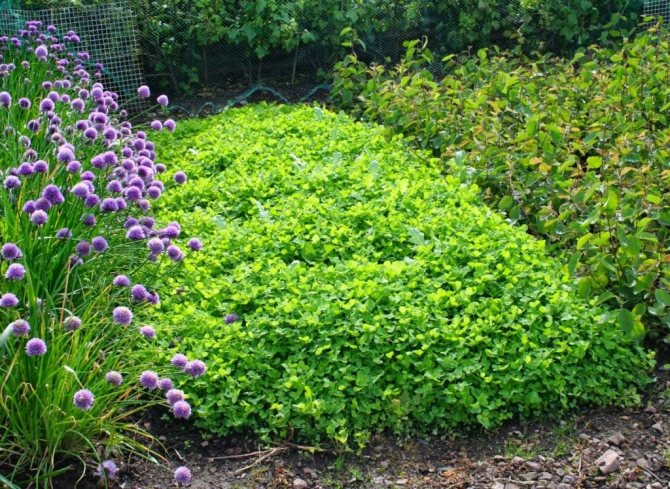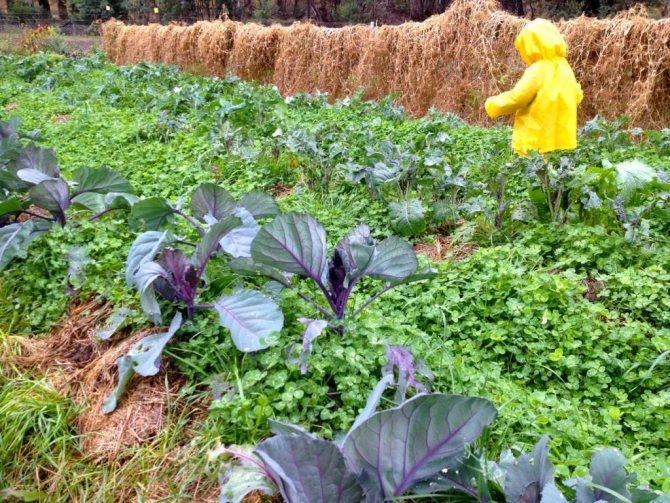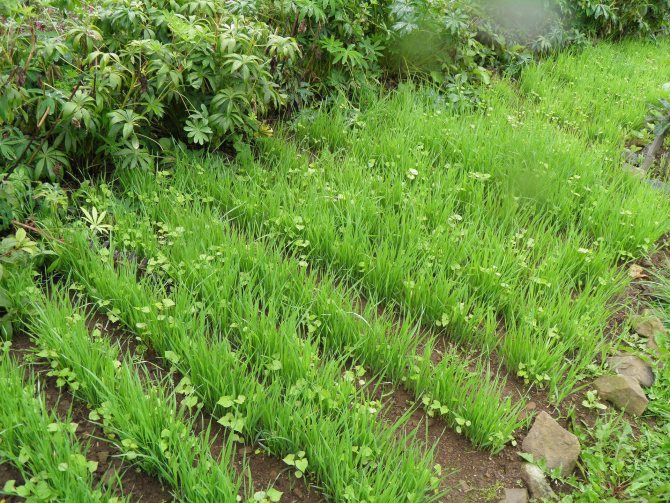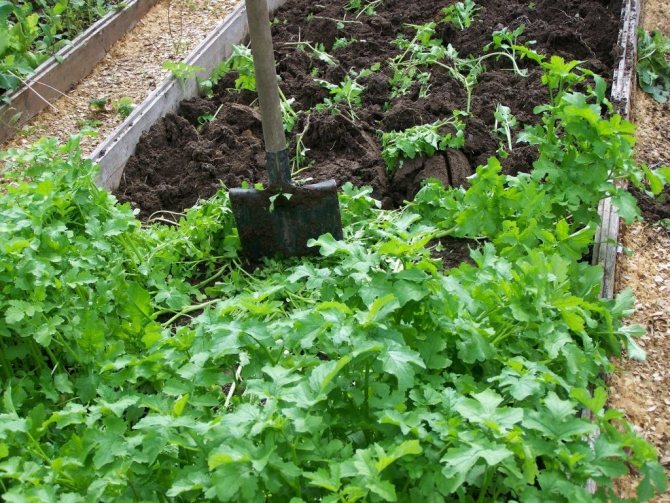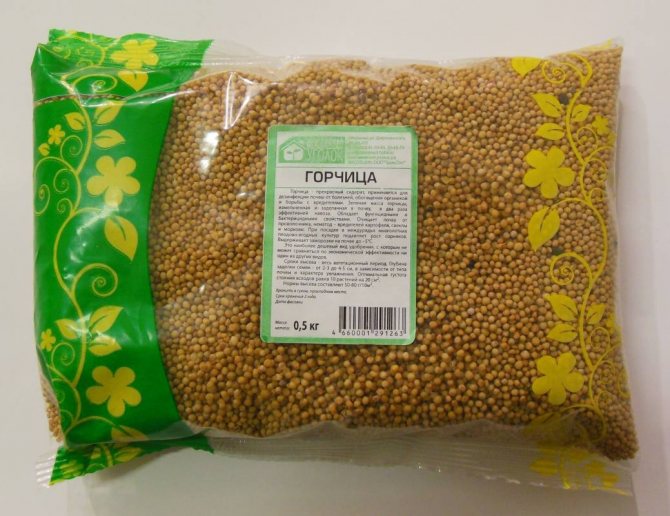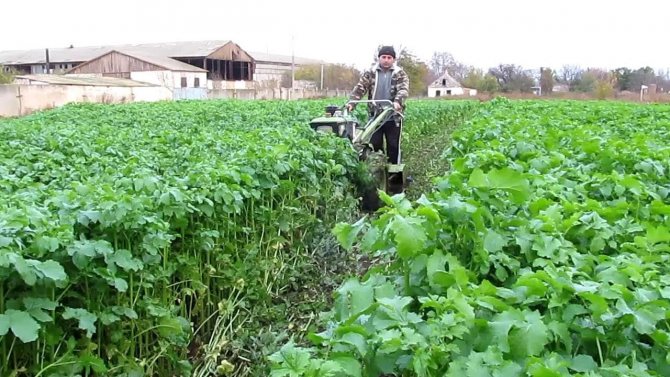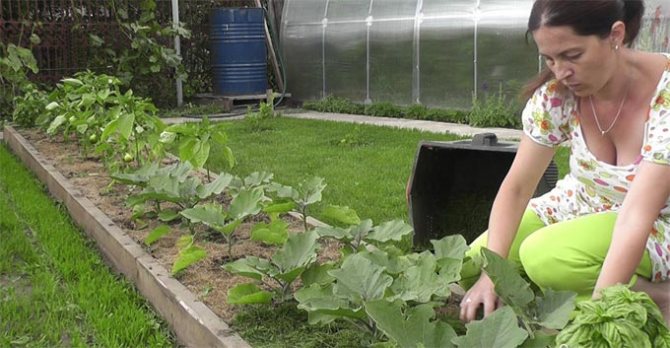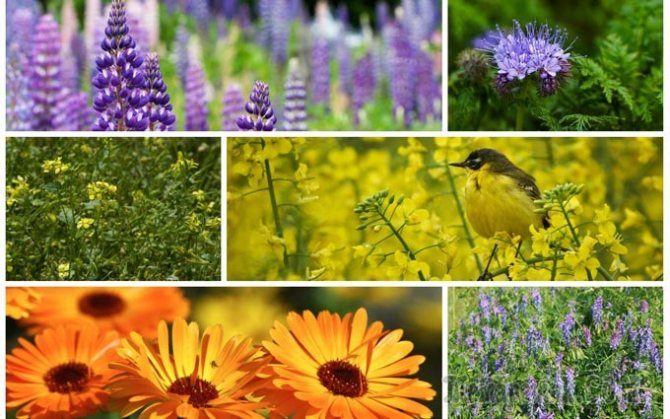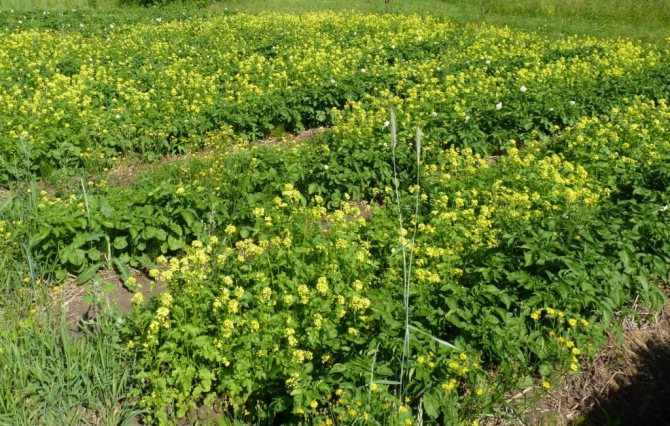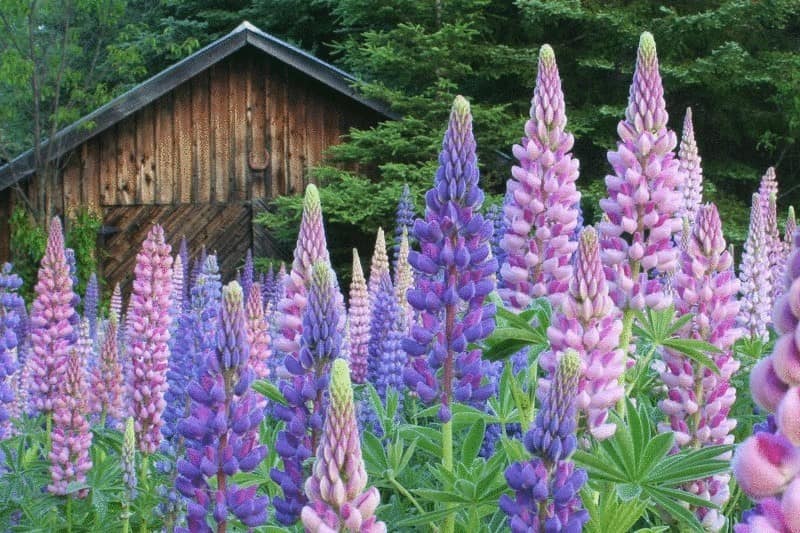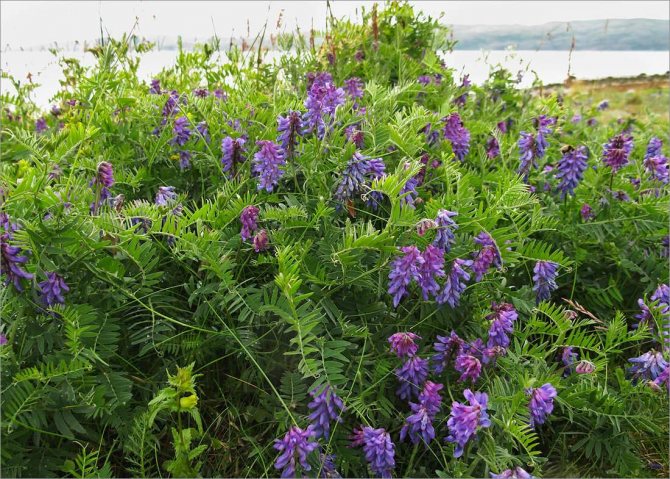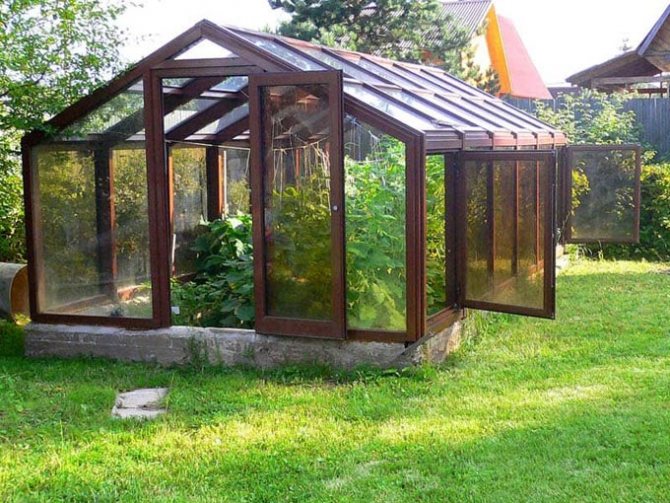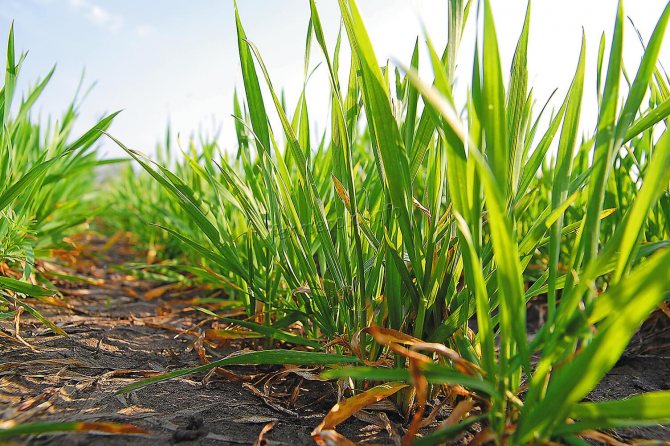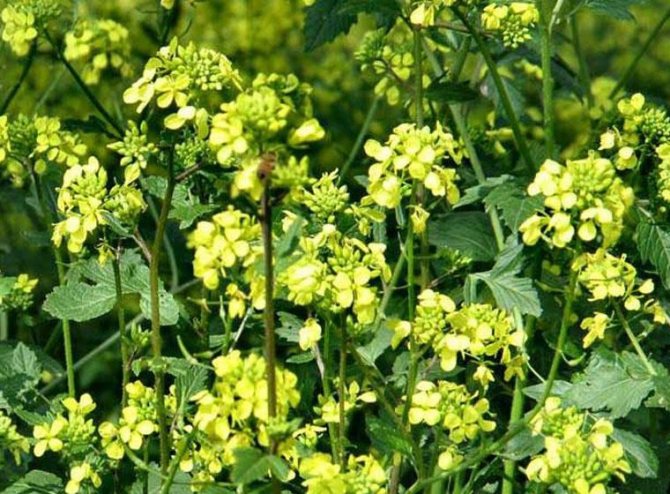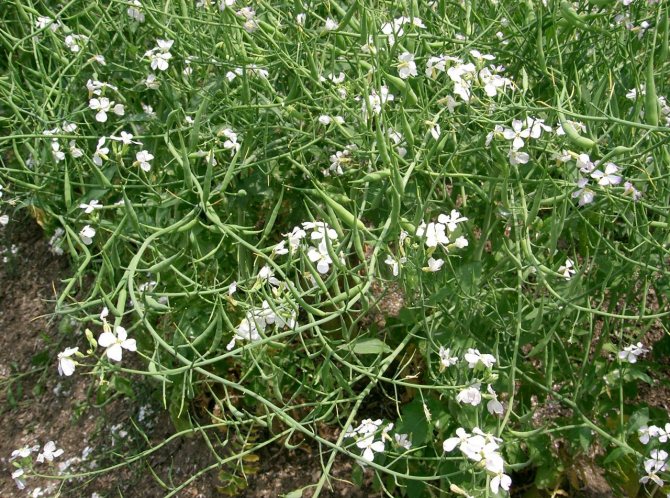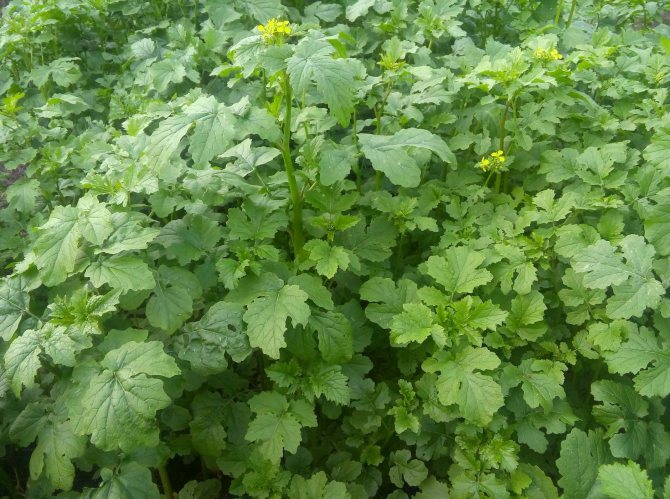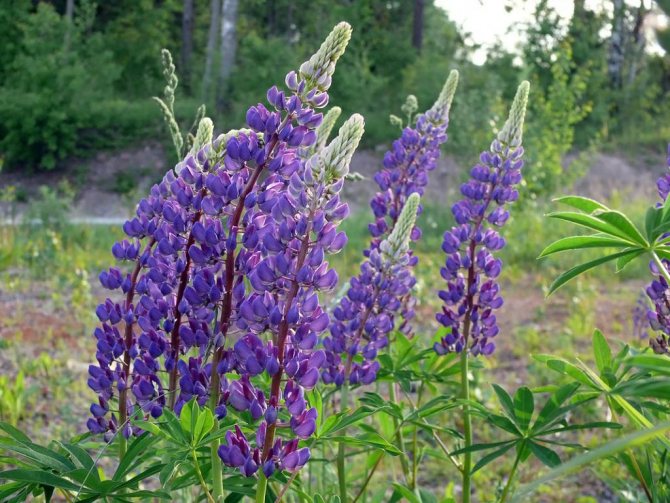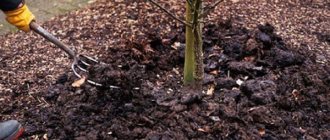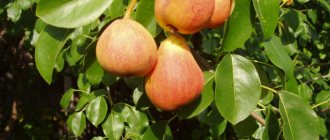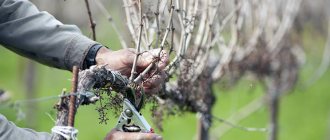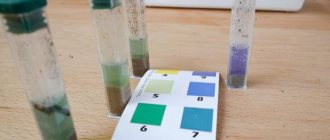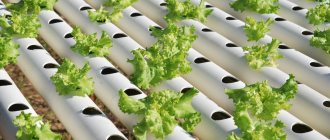The scourge of novice summer residents is the rapid decline in the structure and fertility of the soil. Carrots and beets become tasteless, tomatoes are increasingly sick and reduce the yield and quality of fruits, onions rot in winter, and so on. To maintain high yields of vegetable products, gardeners begin to intensively apply fertilizers (often only mineral fertilizers), herbicides, insecticides and other chemicals. But they only temporarily increase the effective soil fertility, reducing the natural and continuing to negatively affect its structure. Green manure is one of the important stages of organic farming, which provides high yields without chemicals. About what green manure to sow in the fall, see our article.
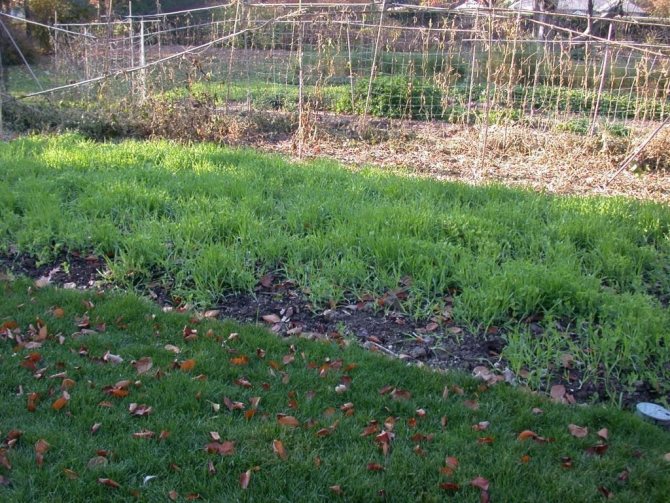
Autumn green manure in the garden. <>
Why sow Mustard
Spicy cruciferous plant Mustard has more than 40 species, but white English Mustard (Latin Sinapis alba) is used as a siderat. It is often called yellow by the people, as it blooms with yellow flowers.
We list all the known beneficial properties of the plant:
- White mustard is able to process into easily digestible forms and accumulate hardly soluble salts of phosphoric acids. And its green mass contains a lot of nitrogen. Therefore, the plant is used as a fertilizer that enriches the soil when embedded with phosphorus and nitrogen;
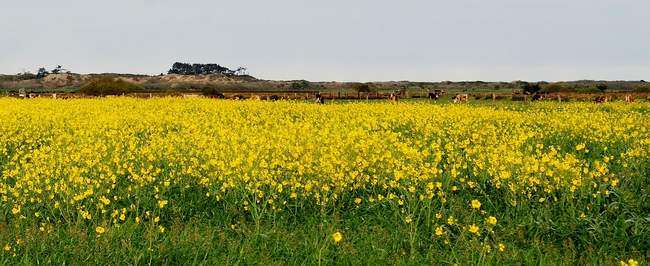

- Due to its fast and active growth, it inhibits the growth of weeds;
- The plant has a powerful root system that perfectly loosens and aerates the soil. It also delivers nutrients from deep layers to the upper soil layers;
- Prevents soil leaching;
- White Mustard phytoncides are harmful to fungal pathogens. These are late blight and pathogenic organisms that cause putrefactive diseases;
- Some pests cannot stand intimacy with this plant. For example, a wireworm, which is difficult to handle in one season, will be expelled as Mustard is planted for three to four years. Learn how to get a wireworm out of a potato field. An insecticidal effect on slugs and moths has also been noted;
- Retaining nitrogen compounds, the plant prevents soil leaching;
- Mustard sown in autumn, after frost, mulching the soil with its stems and leaves perfectly saves the soil from freezing;
- The melliferous quality of flowering plants is known;
- It is an excellent companion, that is, it is planted next to potato plantings, fruit trees, saving them from pests.
Do not use Mustard as a green manure before sowing cruciferous crops: radishes, turnips, cabbage, as the plants have the same pests and diseases.
Why are green manure crops planted
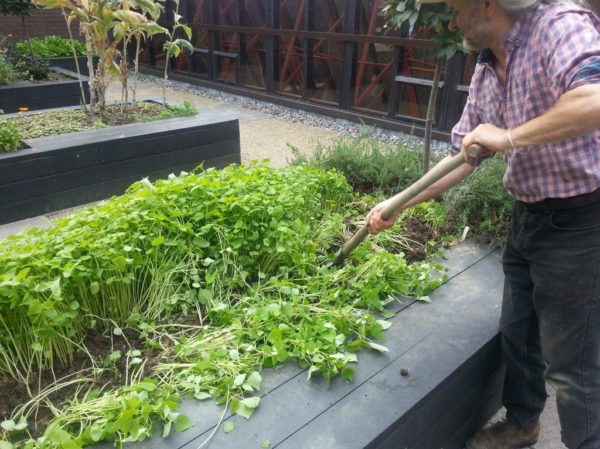

Under the influence of gravity, the earth is constantly compacted. Abundant harvests deplete the humus layer and reduce the content of nutrients and microorganisms in it. Air and water slowly enter the compacted, compacted soil layer, the roots of plants dry out, the plants do not receive the necessary nutrition and begin to hurt. Using the technology of growing green manures, gardeners achieve the following result:
- rotting roots and tops enrich the soil with nutrients;
- organic plant residues increase the humus layer;
- fast growing plants displace weeds from the garden;
- reducing the number of pests, ridding the soil of various diseases;
- sown plants loosen the soil;
- tall stems that have grown in autumn trap snow in winter, reducing soil weathering.
On a note!
Sowing green manure before winter is one of the cheapest ways to increase soil productivity.
When to sow Mustard and how to do it right
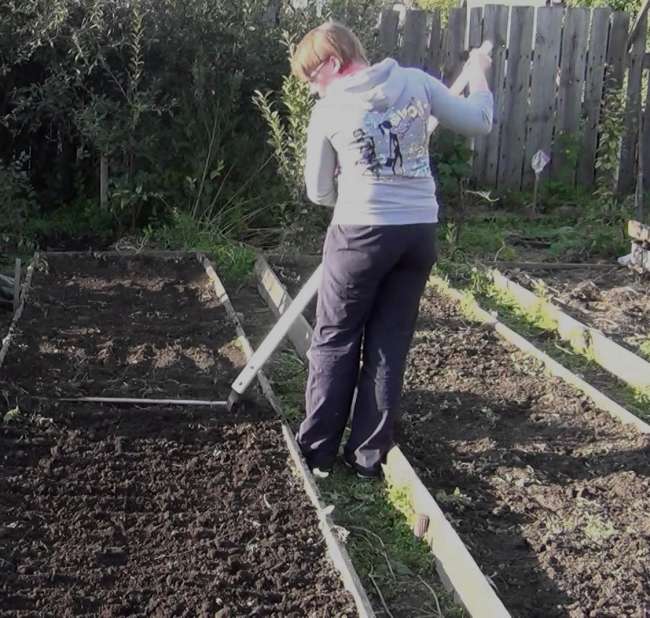

Since the plant grows rapidly and is frost-resistant, sowing of Mustard is done in early spring, in autumn immediately after harvest, until October, and under winter snows.
It is necessary to choose sunny or somewhat shaded areas for sowing, the plant does not like shady places.
It is believed that on heavy soils, with stagnant groundwater, Mustard does not grow well. The acid-base balance of the soil is not critical for the plant.
If Mustard is planted on depleted land that has not been cultivated before, it is necessary to add humus - two buckets per 1m2.
White Mustard seeds are a very cheap crop (and for this reason they are popular too). For 1 m2, 5g is required. seeds.
When to Sow Mustard in Spring
Sowing in spring can be done at the end of March, beginning of April, after the ground thaws. This should be done at least one month before planting the main crops. After about 40-45 days, the Mustard plants begin to bloom, we don't need that. After digging the green mass of Mustard, at least two more weeks must pass for the formation of a fertile soil layer.
There is no need for deep digging to plant Mustard. It is enough to loosen the ground and get rid of large lumps, level with a rake. In early spring, there is usually no need to wet the soil before sowing.
Sowing can be done in two ways:
- Plant the seeds in rows, to a shallow depth (1-1.5 cm), pouring a handful into the holes, observing the distance between the rows of 15-20 cm. In this case, excellent spreading bushes will grow without excessive thickening.
- Sow seeds by scattering on a loosened area, then walk with a rake.
The first shoots appear on the third or fourth day.
Autumn sowing of Mustard
Sowing in the fall by scattering seeds is considered optimal, since it is necessary to create a powerful green layer... Sowing is done immediately after harvesting the main crops, with the obligatory harvesting of vegetation residues and loosening of the surface layer. Sow for 2-3 days to give no chance to weeds. Before snow falls, it is better to mow the plants and leave them compacted on the soil surface. Thus, creating protection for the earth from freezing.
The easiest way to sow in the fall is to plant and forget, and in the spring to dig everything up and treat it with phytosporin.
Mustard Seed Selection
To start using mustard for the first time as a fertilizer, you need to contact a specialized store. White mustard like siderat works best. It is better not to go to the market, there, instead of mustard seeds, they can slip rape seeds. They are very similar, but the plants are different. An area of about one hundred square meters will require about 250 grams of seeds. If the area is large, the amount of seed is increased. In agriculture, agricultural machinery is used for sowing. In the garden, the sowing of seeds is carried out manually.
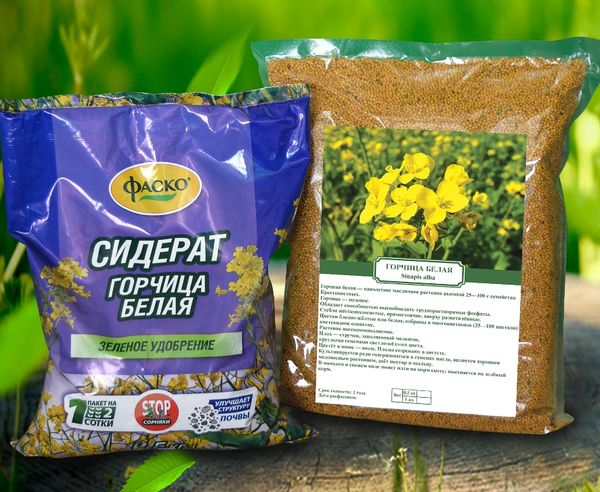

Mustard for seeds in your area
Many grow their own mustard to obtain seeds. To do this, you need to allocate a special place in the garden. You need to have time to plant mustard in the spring, as early as possible. To do this, the ground is first dug up, fertilizers are applied to it. Small grooves are made at a distance of 10 cm. Seeds are sown in them. The soil is watered. After 4 days, the first shoots will appear. Thinning is carried out after two weeks. The plant will begin to bloom in about 1.6 months. When will the seeds ripen? Everything will depend on the climate. The mustard seeds are harvested and dried. For five years, they remain viable if stored properly.
Growing green manure Mustard
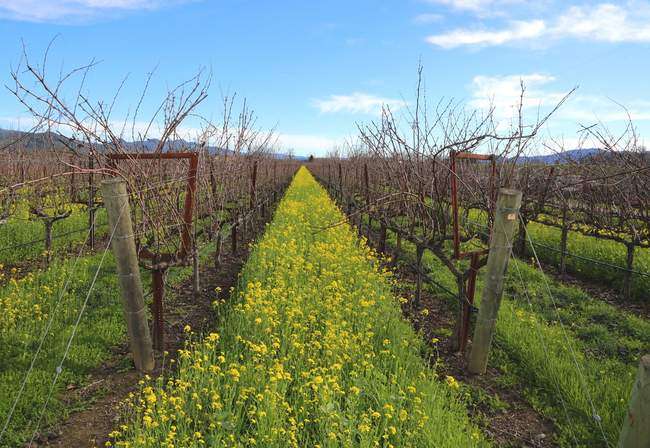

There are no special aspects of growing white Mustard. The plant is very unpretentious. Watering is required only in drought conditions, which is rare in spring, or in autumn, when green manure is grown.
It also does not require top dressing.
It is important for us to get green mass before flowering. Therefore, after about a month after planting, the mustard is mowed.
Choosing a crop for winter planting
The choice of plants for planting depends on the type of soil and predecessor plants. When choosing a crop, it is impossible to sow consecutive plants belonging to the same family. For example, you shouldn't plant mustard after radish because they share common pests and diseases.
For nightshade (potatoes, eggplant, tobacco, tomatoes, vegetable peppers) and pumpkin (cucumber, pumpkin, watermelon, zucchini) crops, the optimal preceding plants will be oats, rye, lupine, mustard or sweet clover.
Good predecessors for beets and carrots are oilseed winter radish, peas, vetch, mustard, and rapeseed. During growth, these plants loosen the soil layer and inhibit the germination of weed seeds. After plowing, the stems enrich the soil with salts and minerals.
To clear the land from viral and bacterial rot, oats, vetch, rapeseed, legumes, annual ryegrass, phacelia are sown. After them, pumpkin and nightshade crops grow well.
To loosen and change the structure of clay soil, green manures with a powerful root system are planted: rye, oil radish or narrow-leaved lupine. After a few years, the soil becomes soft and crumbly.
The ridges are protected from wireworms and nematodes by such siderates as mustard, nasturtium, oil radish, and calendula.
On arable land with excessive moisture, it is possible to sow winter green manure sardanella and lupine; to normalize soils with low moisture, rapeseed, phacelia, and rape are grown.
When to dig up the Mustard
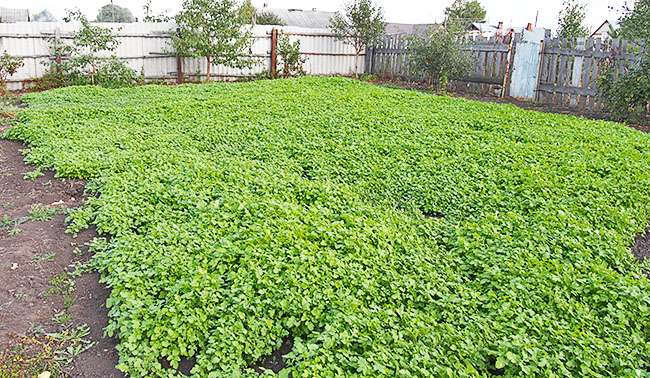

Mustard must be mowed before flowering - upon reaching the bushes 15-20 cm in height at 4-5 weeks, when the plant is soft and not hardened. At the same time, the root system is not affected and provides excellent air exchange in the ground.
There are two ways how to add green manure to the soil:
- Mow and compost using a special vermiculd formulation rich in earthworms. This compost is then applied to the plots to create a fertile layer. This method is especially good in areas that are constantly cultivated and are poor in decomposing microorganisms.
- The easiest way is to mow and embed it in the ground with a shovel or hoe. If there is little time left before planting the main crop, at least two weeks should pass for the green mass of Mustard to optimally decompose in the soil, it is necessary to water the plants before mowing with a solution for effective processing (for example, Baikal).
It is also necessary to remember that the decomposition of mustard plants in dry soil will not be active, so you need to take care of watering.
With all the advantages of Mustard as a siderat, we want to point out that using only this crop from year to year, in the same area, as a "health-improving agent" of the soil, is not entirely correct... It is impossible to provide all the necessary balance of nutrients in the soil with one green manure. To increase the efficiency of green manure use, it makes sense to plant their mixtures - Mustard, Phacelia, Rapeseed, Lucerne, Oil radish, Winter rye. Phacelia as a siderat, we described in detail in this article.
Having considered all of the above, we can conclude - mustard green manure is an excellent choice. It will grow on any land, does not require maintenance, and is unpretentious to temperatures and watering. It will save even the poorest and most barren soil. Perfectly enriches the land with phosphorus and nitrogen, protects the main crops from weeds, pests and diseases.Perfect for winter crops, keeping your plots protected from freezing and erosion.
The experiment will surely be crowned with success if you use our information and advice.
Landing technology
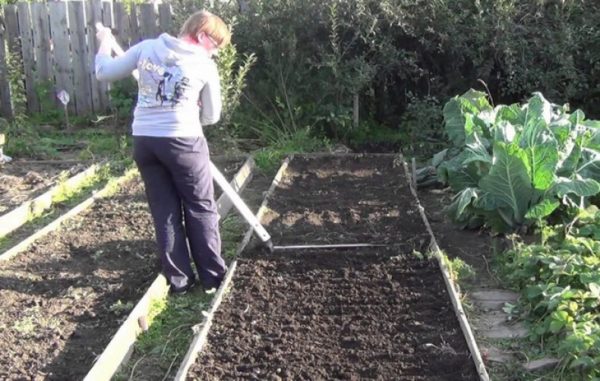

Planting green manure plants is similar to planting conventional crops. The following algorithm is used for cultivation:
- green manure crops are planted immediately after harvesting the previous plants;
- before sowing green manure before winter, the ridge is cleaned of the remnants of the previous culture and weeds;
- for the rapid growth of green mass, 40 grams of nitroammophoska and phosphorus-potassium fertilizers are applied to each square meter of the garden;
- the top layer of arable land is dug up or cultivated;
- in dry weather, for better seed germination, the soil is poured abundantly with water before planting;
- sowing seeds is carried out in a continuous way or in grooves. Landing in grooves is planned with combined crops;
- seeding depth - 2-4 cm. between seeds in a row 1-2 cm;
- if the predecessor crop was removed from the garden in the summer, the siderates are planted for fertilization twice. For the first time, plants with a short growing season are planted: legumes or cereals. After the height of the stem reaches twenty centimeters, the plants are mowed, crushed and mixed with the ground. Crushed stems and leaves in the ground quickly decompose, giving the accumulated organic matter to the ground;
- the second planting of green manure crops is carried out in the fall in mid-September or very early October. At this time, sweet clover, vetch or grain crops are planted. Before frost, plants have time to grow a branched root system up to ten centimeters of the aboveground part. The stems of plants help accumulate snow on the site in winter, the root system protects the soil from being blown up by the wind. After the onset of warm weather, the green manure, which quickly wakes up from hibernation, protects the surface of the earth from drying out;
- in the spring, before the main garden crops begin to be planted, green manure crops planted in a continuous way are plowed into the ground. Plants planted in rows are cut, the stems are dumped into the aisles and covered with earth. After 15-20 days, the main culture is planted in this place.
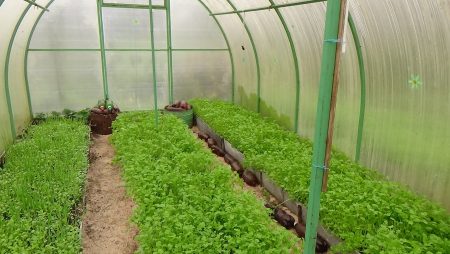

You may be interested in:
What to plant in a greenhouse in the fall after a tomato? Proponents of organic farming consider green manure to be one of the best ways to increase fertility ... Read more ...
A frequent question of gardeners: is it necessary to dig up green manure? To answer it, you need to look at the acidity level of the soil. On acidic soils, decomposition processes proceed very slowly, therefore, the mown stems are left on the arable land for mulching or composted. On soils with alkaline or neutral acidity, digging up arable land gives an excellent result.
Features of siderates
When deciding what is the best green manure to sow in the fall, it is important to familiarize yourself with their properties and the content of useful microelements, as well as the main functions on earth.
A feature of green manure crops is their rapid growth and the ability to gain green mass. After a certain time, the plants are mowed down, using for fertilization.
Their importance for the soil cannot be overstated:
- Enrichment with useful microelements occurs the upper layers of the soil, since green manure roots pull phosphorus and nitrogen compounds from the depths. They transform them from hard-to-find substances into digestible substances.
- Plant residues after mowing become an excellent food for processing by microorganisms and worms into compost, which increases soil fertility.
- Fast growing plants are actively gaining green mass, dampening the growth of weeds on the site.
- Dense crops of grass save the soil from drying out, cracking under the sun's rays, and blowing out the fertile layer by the wind. The cut grass is left on the surface for mulching.
- The roots of useful plants gradually loosen the soil. After removing the upper stems, the remaining roots rot, allowing groundwater to enter, creating breathable pores. The soil structure is significantly improved.
- Certain types of green manure are repellents for harmful beetles, their larvae... Dense crops of grass provide sanitary cleaning of the site before sowing new crops.
Using green manure in your gardens and fields, you can achieve biological protection of the soil without the introduction of chemicals and herbicides. This is a direct path to growing organic products.
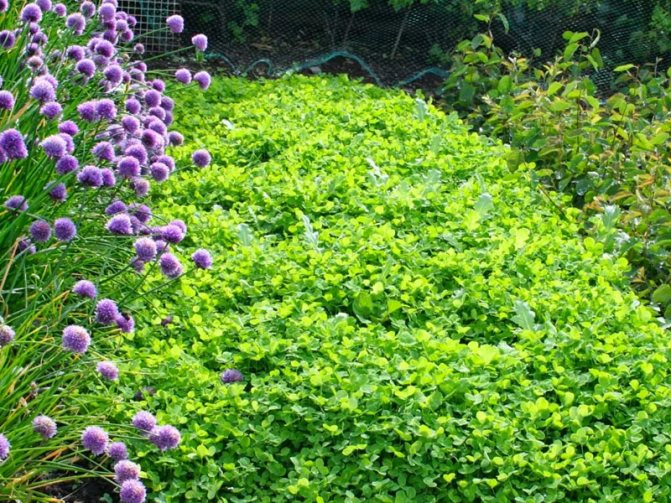

The role of green manure in soil fertility
Green manure crops or green manures have established themselves as effective environmentally friendly fertilizers. They are also called green fertilizers... In organic farming, sowing green manure is the most effective and low-cost means of restoring soil fertility. Siderata are individual crops or a mixture of plants, usually annuals, that develop a powerful root system and a rapidly growing aerial green mass. The root system of green manures loosens the soil, especially of a heavy composition (loamy chernozems), provides a large amount of organic residues, and the aboveground mass serves as a good snow retainer, after mowing it is used as mulch or embedded in the soil as a green fertilizer.
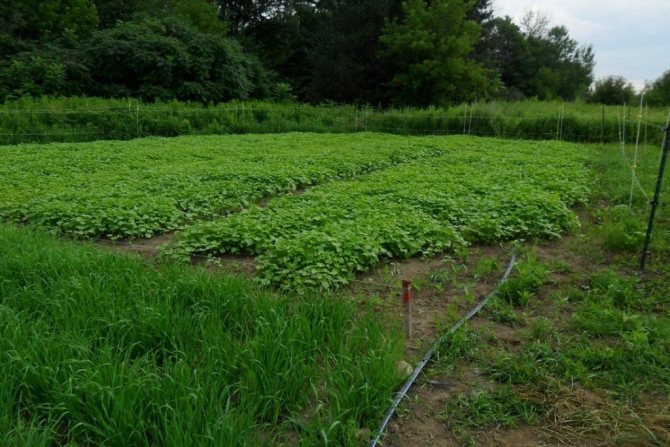

Siderata on the site.
Siderat use:
- for loosening the soil (rye, oats, rapeseed, mustard, etc.),
- for soil disinfection from scab, rot, wireworm (a mixture of green manure crops radish + rapeseed + mustard with the addition of calendula, marigolds, oats),
- increasing fertility and loosening loose soils (sweet clover, alfalfa, vetch, vetch-oat mixture, vetch with rye, mustard with legumes),
- for mulch (alfalfa, vetch, phacelia and other green manure crops),
- protection against spring return cold snaps (any cold-resistant green manure),
- in order to protect against pests in the form of mixtures of flowering plants (marigolds, calendula, lupine, phacelia, sweet clover). Their mixed smell drives away pests.
Green manure for the garden
Plants for sowing for garden crops differ in their properties, although they have the same purpose - fertilizing the soil with green mass. Among them are annual and perennial crops.
In the garden in the autumn, it is better to use annual crops from different families. In a short period before the autumn frosts, the crops grow and, after mowing, they create fertilizers for the winter.
Sowing a plot with perennials (for example, clover, sainfoin, etc.) is better in those places that are not involved in planting garden crops in spring. Such plants grow and go deep into the ground. The growing season stretches over several years. In the last year, the grass is mowed low and the soil is loosened along with the roots.
When choosing a crop for feeding a vegetable garden, the following factors must be taken into account:
- the family to which the green manure culture belongs;
- what culture is preceded by the selected green manure;
- the quality and composition of the soil;
- climatic conditions in the region.
Each type of green plant brings specific benefits to the site where it is sown:
- Legumes (alfalfa, clover, peas, lupine, etc.) fill the soil with nitrogen, convert phosphates into digestible elements, help fight pests such as nematodes;
- Cruciferous (radish, mustard, rapeseed) loosen the top layer of the soil, pull useful elements from deep layers, fill the soil with phosphorus fertilizers and sulfur;
- Cereal plants (rye, oats, barley) change the structure of the soil, enriching it with potash fertilizers, prevent the growth of weeds.
- Borage (phacelia) completely displace weeds, neutralize acidic soils, have a pleasant aroma that attracts bees.
When choosing siderates, you need to adhere to crop rotation.Cruciferous plant species are not planted in the beds where mustard, rapeseed, and radish were sown. Corn does not tolerate cereal predecessors.
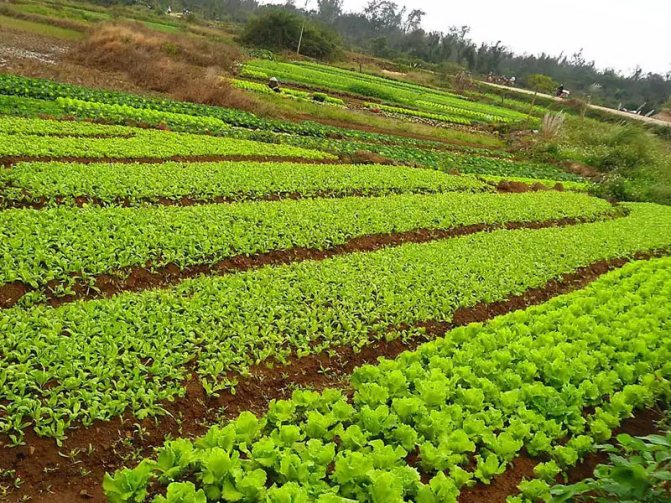

Why is there a decrease in soil fertility?
This happens because there is non-compliance with agricultural techniques:
- the soil is depleted due to the removal of the same elements by the culture, which is grown for a long time in one place;
- contributes to the accumulation of pests and diseases that affect not a single crop, but the family as a whole (nightshade, cruciferous and others), growing them in one place for several seasons in a row;
- systematic burning of plant residues sharply destroys soil organic matter and its structure. Decrease in organic matter leads to soil sanding.
To stop the process of destruction of natural soil fertility, it is necessary to restore and constantly increase the amount of organic matter in the soil. This can be achieved by the following agrotechnical measures:
- switch to the cultivation of crops with the use of constant mulching the soil with plant residues... For mulching, use healthy fresh residues of crops and weeds (preferably not seeded), straw, fallen leaves, humus, compost.
- Under autumn digging, systematically apply manure (fresh and half-ripe), humus, vermicompostobtained using EM technology, vermiculture and in other ways.
- Recently, more and more actively introduced into agrotechnical measures green manure technology, capable of improving the structure, quality and fertility of the soil, including natural soil, in a short period, and significantly increasing the amount of organic matter in the soil.
When to sow green manure in autumn
The autumn period is rather short for the vegetation of plants. Therefore, the choice of green manure crops for autumn sowing is reduced. They are sown immediately after harvesting early and mid-season varieties of potatoes, cabbage, onions and other vegetables. Planting of green manure in the fall is carried out in free areas.
Mustard
Mustard seeds sprout quickly and amicably in the fall. To sow them, you need:
- Choose a site where cruciferous plants (cabbage, radish, lettuce, etc.) are not planned to be planted next year;
- Prepare a small amount of seeds;
- Scatter seeds in the area with their obligatory deepening into the soil or sow in even rows.
Mustard is sown immediately after harvesting different crops, from August to October. Crop maintenance is not necessary. In two weeks the garden will be covered with lush greenery. If the autumn days are warm, the mustard manages to throw out the buds and bloom.
The green mass is mowed a few days before digging or plowing and removed from the site. On virgin soil, which is cultivated in spring, the cut grass remains in the form of mulch, enriching the topsoil with phosphorus fertilizers.
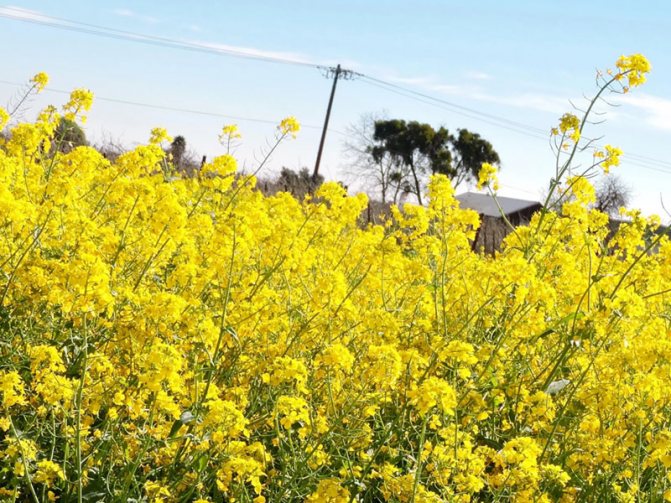

Oats
For full development and growth, the plant requires potassium. It is introduced into the soil together with organic fertilizers, which can be replaced by cereal green manure - oats.
In late autumn, before plowing, green shoots can be mowed and removed from the site. The green mass in the form of mulch will be beneficial without the need for organic fertilizers. In the spring, the oat-planted area is plowed along with the green stalks of the oats.
If the cereal plant has given a strong growth, the stems are mowed and removed from the site. The green mass is used for feeding animals or left for mulching the site.
Winter rye, like green manure in autumn
On land where loosening is not planned for the winter, winter rye will be a suitable crop for fertilization.
The culture is sown in October so that the grain has time to germinate in the soil and create a rosette before the cold weather begins. Sowings of rye are used to loosen the topsoil and enrich with potassium.
Green mass that has reached a height of 20-40 cm, mowed in late autumn and removed from the field before plowing.More often, winter rye is left for the winter, so that the plant has time to give amicable shoots for spring mowing.
When to sow phacelia in autumn
Phacelia belongs to the group of green manure, which is sown from early spring to late autumn. The plant is considered a universal predecessor for any garden or field crop. In addition, blooming phacelia becomes attractive to bees.
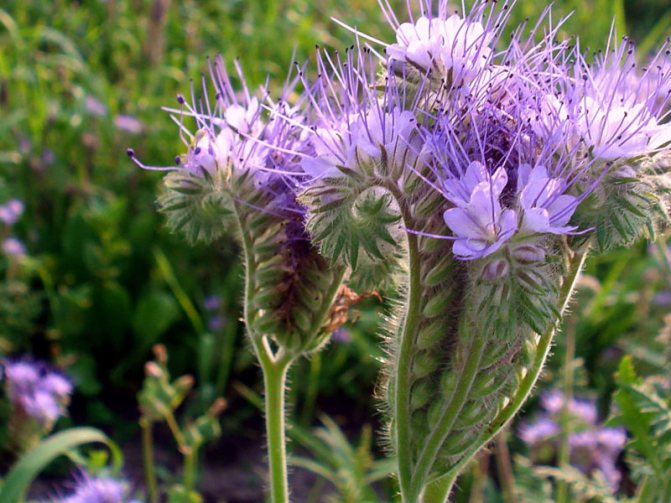

Fall crops of phacelia are carried out during the rainy season, since small seeds require moisture. Seeds are scattered in scattered or even rows, always covering them with earth. The green mass is growing quite quickly.
For a month and a half, buds and flowers appear. Phacelia is mowed before the onset of cold weather and the site is dug up along with the green mass. Such fertilization completely replaces the introduction of manure or humus, which is much more profitable for the owner of the land plot.
Sowing green manure in the fall, carried out in accordance with agrotechnical standards, give the land exceptional benefits. Loosening of heavy soils, enrichment of depleted soil with useful minerals, preparation of the site for sowing next year. On the lands where green manure is used as fertilizer, organic vegetables, cereals and other crops are grown.
Mustard as siderat
A plant very popular with gardeners. Mustard can be sown from spring to autumn. In the spring this is done very early, as soon as the snow melts, since the plant is afraid of cold weather. The period from sowing seeds to technical maturity is 1.5-2 months, the main crops can be sown as early as 2 weeks after mowing and plowing. It grows lush greenery quickly, gives a light shade to young shoots of cultivated plants, but drowns out the growth of weeds.
IN summer time it is good to sow mustard on crops that take longer to ripen - peppers, tomatoes, eggplants. In addition, it is an indispensable tool in the fight against scab and late blight, which means it is a welcome "guest" in the beds with these crops and potatoes.
For winter mustard seeds are sown in September, after the crop is harvested from the garden. In this case, the tops are cut only in the spring. Moreover, it is so tender in mustard and decomposes so quickly that it is not even buried in the ground.
Mustard seeds are sown in rows with an interval of 10-15 cm between them or randomly. The sowing rate of seeds in the first case is 1-1.5 g / m2, with spilling - 3-4 g / m2.
Phacelia as a siderat
Universal green manure, after which any vegetables and berries will feel very comfortable. Phacelia is unpretentious, cold and drought-resistant, characterized by rapid growth and decorativeness.
Phacelia seeds are sown in the spring, immediately after the snow melts. Sowing rate - 1.5-2 g / m2. Grows well on clay, sandy, peaty and even rocky soil. Sown for the winter, phacelia will protect the soil from deep freezing. It loosens soils that are dense in structure, strengthens light soil, while reducing acidity.
Phytoncides contained in plant tissues suppress the reproduction of dangerous bacteria and fungi in the soil, causative agents of rot, scab and late blight. In addition, they scare away aphids, moths, wireworms, and nematodes. The green mass, which is rich in nitrogen and other minerals, is cut 45-50 days after sowing, when flowering begins. Close up to a depth of 10 cm. When planting seedlings, phacelia need not be mowed - it will protect young plants from wind and possible frost. After a while, the greens are cut and used as garden mulch.
Clover as a siderat
Clover prefers moist soil with a low level of acidity. Like other legumes, it saturates the soil with organic matter, nitrogen and other minerals. The roots protect the soil from weathering and leaching, at the same time loosen the soil, making it light, friable, rich in oxygen and moisture.
By aiding the activity of beneficial soil bacteria, clover promotes the formation of beneficial humus. However, soils with high acidity or too salty clover are not suitable. Loves moisture, but not excessive. Sowing is carried out in early spring (March-April); during summer sowing, it is necessary to ensure sufficient watering. Seeding rate - 2 g / sq.m.
The greens are mowed shortly before the beginning of flowering, and 2-3 weeks after that you can plant the main crops - eggplants, tomatoes, cucumbers, potatoes, cabbage. The only exceptions are legumes, since they are infected with the same diseases, and they have common pests.
Lupine as a siderat
Lupine is notable for the fact that special nitrogen-fixing bacteria live on its long (up to 2 m) roots, which absorb nitrogen from the deep layers of the soil, and then give it to the upper ones. In addition, lupine makes difficult-to-digest phosphate compounds available to other crops.
Different types and varieties of lupine prefer different types of soil: plants with white flowers thrive on loam and sandy soils. The more common purple lupine loves acidic soils more, in contrast to the yellow-flowered soil that is undemanding to the composition of the soil, which only needs good moisture. Lupine is sown in early May. The green mass is ready for mowing 6-8 weeks after germination, until the stems are coarse. The green mass is embedded in the soil to a depth of 5-6 cm. The seeding rate of seeds is 20-30 g / m2.
Oats as green manure
Like all cereals, oats enrich the soil with valuable organic matter, as well as macronutrients - phosphorus and potassium. To saturate the soil with the necessary amount of nitrogen, it is good to sow oats in a complex mixture with rapidly growing spring vetch or peas. It grows on soils of different types - from sandy and clayey to peat and black soil.
The root system of oats is able to loosen dense soil, providing air and moisture access to the inner layers. Thanks to the strengthening properties of the roots, the light soils will protect the oats from erosion and facilitate the absorption of moisture by the plants. In addition, the roots of this cereal contain a substance that can suppress pathogens of root rot, bacterial and fungal diseases. Oats are sown in mid-spring (usually in April). The latest sowing date (before winter) is the first half of September. When sowing in rows, the seeding rate is 10 g / m2. The scattering method requires an increase in consumption up to 15-20 g / m2. The depth of planting grains into the soil is 3-4 cm.
Advice
Thanks to green manure and their proper use, in a few years you can significantly improve the structure of the soil on your site. There are some simple rules:
- Use the siderates that are common for your region of residence;
- they must be mowed in time, before the stems become too dense;
- mow green manure no earlier than 2-3 weeks before planting the main crop;
- use green manure belonging to a culture different from the one planned for planting;
- take care of the roots of green manure when mowing - for this use a flat cutter;
- winter green manures do not need to be mowed in autumn.
Mustard as siderat
Mustard with the specific epithet "white" is widely known as a siderat, although in fact both flowers and seeds are yellow. The mustard sown on the site bears tremendous benefits:
- improves the composition of the soil: saturates with organic matter, phosphorus, potassium, sulfur.
- green mass of mustard, crushed and plowed into the soil, is 2 times more effective fertilizer than manure,
- releases sparingly soluble phosphates,
- loosens the soil
- possesses fungicidal and bactericidal properties,
- inhibits the development of pathogenic microorganisms,
- suppresses the spread of weeds,
- cleans the soil from wireworms and nematodes,
- expels slugs and pea moth from the site,
- heals the soil,
- prevents the development of potato scab, fusarium, late blight, rhizoctonia,
- mustard, moreover, is a wonderful honey plant.
Mustard as a siderat is very easy to grow, it rises quickly and grows with lightning speed. Literally 30 - 45 days are enough for it to build up a lot of green mass. It grows well in any soil: from very acidic to alkaline.
Mustard seeds germinate at temperatures up to -3 degrees. Seedlings are cold-resistant: they easily tolerate frosts down to -5 degrees.
If in the same season it is planned to plant the main crop after the mustard, it is better to mow the green manure even before the mass flowering, while the leaves are juicy. Grind and bury. When planting in autumn, the mustard does not need to be mowed - during the winter it will crush and give the soil maximum benefits.
It is especially useful to plant mustard as a green manure under potatoes, tomatoes and root vegetables. But for related crops (cruciferous family), it is better not to sow. The list of prohibited crops includes cabbage, radish, turnip, rutabaga, daikon, radish.
As a siderat, it is recommended to sow mustard before growing the following crops:
- peas and beans,
- strawberries and strawberries,
- potatoes,
- onions and garlic,
- carrots and beets,
- zucchini and pumpkin,
- tomatoes and cucumber,
- berries and grapes.
Seeding rate: 3-4 g per 1 square meter, or 300-400 g per one hundred square meters. For wireworm protection: up to 10 g per square meter.
Sowing dates:
- in the spring before planting the main crop,
- in the summer after harvesting early crops,
- in the fall into the winter,
- from April to September (inclusive).
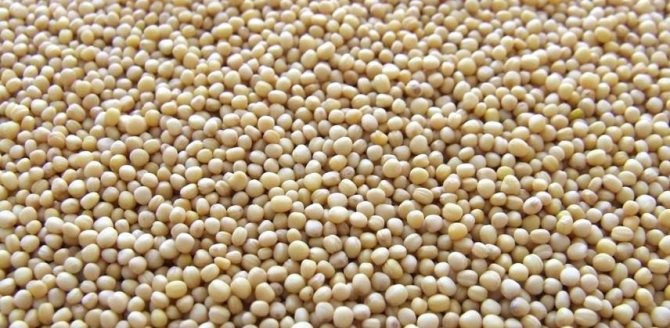

General "Golden" rules for sowing green manure:
- Sow thickly.
- Do not bury green manure deeply in the soil (ideally, cut it off with a flat cutter at a depth of 2-3 cm, then the roots will remain rotting, and the green mass will become mulch).
- Withstand 2 weeks between incorporation of green manure into the soil and planting of the main crop.
- Do not let the green manure seed.
- Do not plant green manures related to the culture that is planned to be sown next.
Mustard can be planted on:
- poor soils containing little organic matter and nitrogen,
- on heavy, clayey and loamy soils inhabited by weeds,
- it is better not to sow mustard on acidic soils,
- mustard prefers slightly alkaline soils,
- mustard is excellent for sowing on a slope where the soil is washed away - to fix it.
In general, mustard is universal and suitable for sowing on all types of soils, unlike many other green manures.
Green manure and vegetable compatibility
- Solanaceous plants: potatoes, tomatoes, eggplant, bell peppers, and melons: cucumbers, zucchini, pumpkins, squash - grow well after such siderates as rye, oats, lupine, oil radish, mustard, sweet clover, vetch-oat mixture, rapeseed, phacelia, ryegrass annual.
- The best predecessors for beets are mustard, rape, oil radish, vetch, cereals. Poor green manure predecessors: corn and legumes (vetch, alfalfa, lupine, sweet clover, etc.) and rapeseed because of the danger of nematode infestation.
- For carrots - all crops are good, but the best are oil radish, mustard, rapeseed, rape.
- Siderata for cabbage, daikon, radish, turnip: sweet clover, vetch, lupine, phacelia, buckwheat, oats, clover, peas, as well as cereals.
- Onions can be planted in beds where buckwheat, lupine, vetch and vetch-oat mixture, barley, phacelia acted as siderates, but in general, any siderates, except for corn and sunflower, can be precursors for garlic onions.
- But garlic is more capricious - for it the best siderates are phacelia and mustard. It is undesirable to plant garlic after any legume siderates
- Before planting legumes (peas, beans), you can sow mustard, oil radish, rapeseed, rape, you can not - other legumes.
- The best siderates for strawberries: lupine, mustard, phacelia, oats.
Step by step: How to sow mustard
Sowing preparation:
- The freed area is cleared of weeds and tops.
- For sowing mustard, it is enough to loosen the soil to a depth of 4-7 cm.But if autumn digging of the soil is practiced, then it must be dug up before sowing green manure, to a depth of 20-25 cm.
- Fertilizers are applied to very depleted soil when digging or loosening (Gumi-Omi Autumn or Chicken droppings are suitable).
Sowing methods:
- Mustard seeds are scattered thickly over the garden bed and slightly embedded in the soil.
- Or you can: Make grooves 2-4 cm deep, fill in the seeds and cover them with earth using a hoe, rake or flat cutter.
- The sown mustard must be covered with mulch, film or spandbond on top so that the birds do not chew the seeds.
What are the benefits of mustard for the garden
This siderat is capable of:
- "Give" oxygen and air to the earth.
- Disinfect the soil by killing any pests.
- Clear the ground from fungi and infections.
In addition, sowing mustard in the fall to improve the soil:
- retains nitrogen;
- helps crops grow faster;
- prevents soil freezing;
- prevents weeds from growing.
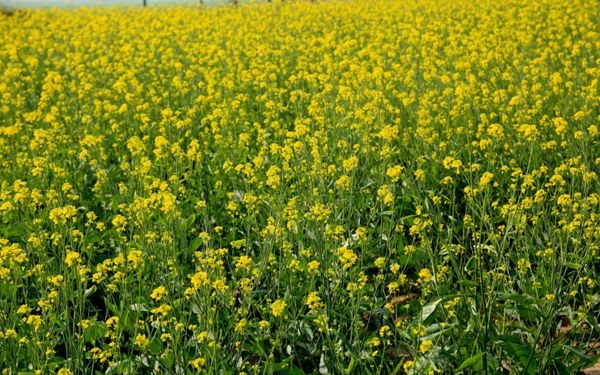

What are they for and what do they give?
Many gardeners ask a reasonable question - why plant on fertile land something that does not yield a crop? The answer is simple - to increase the yield of what will be planted on this plot later, avoiding many problems, for example, weed control. And thanks to them, the need for ready-made purchased fertilizers is reduced significantly. So what are their benefits?
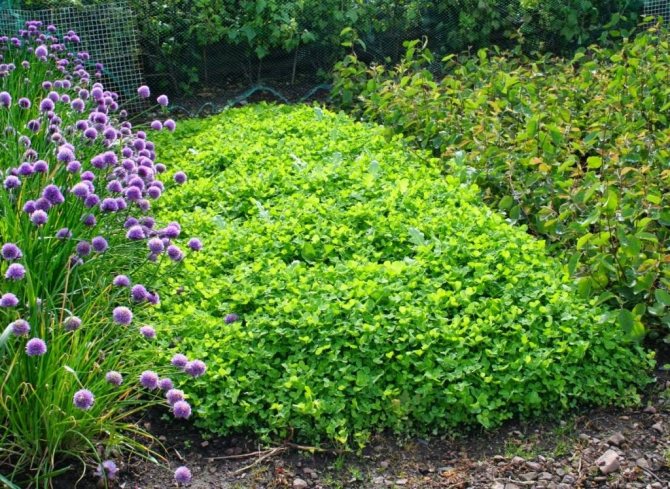

- The growth of weeds is suppressed.
- The soil is protected from adverse weather conditions - drying, overheating or, on the contrary, cooling.
- They prevent the reproduction of pests and resist infections, pathogens.
- They prevent soil caking, loosen it thanks to the fibrous and branched developed root system.
- Natural and water exchange improves, the soil becomes more structured.
- Prevents leaching of the fertile layer and essential nutrients.
- Protects against erosion.
- They contribute to the removal of useful microelements into the upper arable layers of the earth. With their help, it is possible to return fertility even to "dead" lands.
- They enrich the soil with valuable elements that are produced in the process of life, primarily nitrogen, potassium and phosphorus.
- Reduce the acidity of the soil.
- Their underground part is a nutritious raw material for worms and beneficial microorganisms.
Sowing mustard in autumn
As soon as the crop is harvested, in early autumn, you can immediately sow white mustard. Before the autumn frosts come, the mustard manages to cover the ground with a green mass, partially bloom, but does not yet form seeds. You can not mow it, but leave it for the winter.
Mustard left to winter on the ground, in winter it partially melts under the snow and serves as mulch. In the ground where the roots are located, natural processes occur that improve it, making it softer and more fertile.
Sederats are sown in late autumn so that they germinate in early spring. Mustard seeds are laid in the already cooling soil, after thoroughly loosening it.
They should not sprout before the spring thaw, only put down roots, but in no case freeze. Therefore, it is necessary to plant seeds to a greater depth than when planting in spring and early autumn. You should not be afraid that they will not sprout up in the spring, the melt water partially flushes out the top layer of the earth and seedlings will appear as usual.
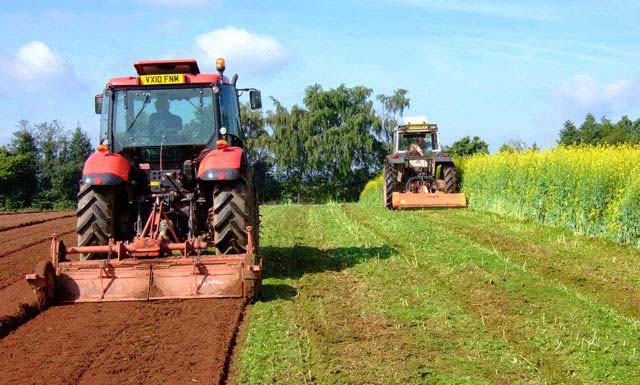

Selection table for green manure for different agricultural crops
Types of green manure for sowing for different garden crops:
| Garden plants | What green manures are planted? | What cannot be sown |
| Potatoes |
| — |
| Tomatoes |
| — |
| Beet |
|
|
| Cucumbers |
| — |
| Peas |
|
|
| Squash |
| — |
| Eggplant |
| — |
| Garlic |
|
|
| Radish |
|
|
| Cabbage |
|
|
| Onion |
| — |
| Peppers |
| — |
Siderata for tomatoes are selected from legumes. Optimal variations are lentils, soybeans, bush and asparagus beans, peas.
Siderata for potatoes before winter
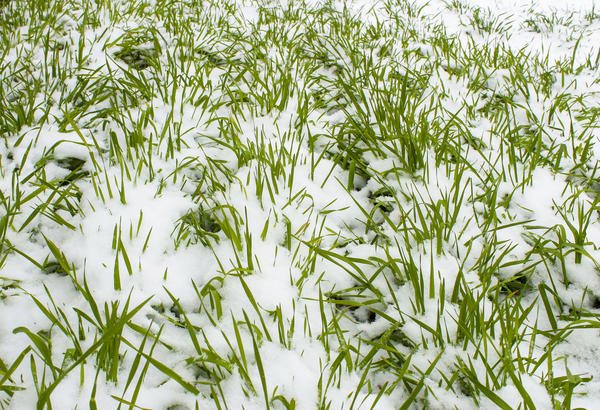

It is possible to steadily increase the productivity of potatoes if you choose the right approach to the selection and planting of green manure plants.
Autumn sowing of green manure is preferable to spring sowing. During the winter period, the soil is maximally enriched with mineral and organic components. By the spring contains nitrogen, phosphorus-potassium components.
When choosing which green manures to plant after potatoes, preference is given to legumes, which saturate the soil with nitrogen-phosphorus components in record time. A good effect is given by winter cereals, which structure the soil with roots.
It is useful to use complex mixtures. A good combination of 3-4 crops with the inclusion of cereals and legumes - oats, vetch, rye, rapeseed, mustard and pea varieties.
What siderates it is better to sow in autumn under potatoes:
- Lupine... The shoots are ready for embedding in 5 weeks. The roots loosen the soil layers, do not take away valuable minerals.
- Rye... Among the advantages are frost resistance and endurance. They can be planted on any type of soil. Retains nutrients in the ground, prevents washout and erosion. It is used on large farm fields.
- Mustard... Differs in cold resistance. Can be sown in autumn and spring. It rises quickly - after a month there is enough tops to form humus. Reliably protects tubers from damage by wireworms and mass shoots of weeds. Mustard brings a lot of potassium and valuable organic matter to the soil layer.
- Oats... Sown until mid-September. The stems are ready for harvesting in 35-40 days.
- Vika... Has a short growing season. It accumulates a lot of nitrogen in the nodules, which will then get to the potatoes.
- Donnik... Absolutely unpretentious. Grows on clay, sandy, depleted soils. Loosens the structure, enriches with organic compounds, gives a lot of nitrogen. After cultivation, the soil is not dug up. Transforms layers into a loose nutrient medium. Applied in the aftermath method - the roots are buried in the ground after mowing. Roots with a high level of nitrogenous substances are valuable for potato tubers.
- Radish... The root vegetable has a juicy, oily tops that can be applied after 45-60 days. During this time, the green part grows 3-5 times. Cleans the area from pests and pathogenic bacteria.
Why mustard is useful for the soil
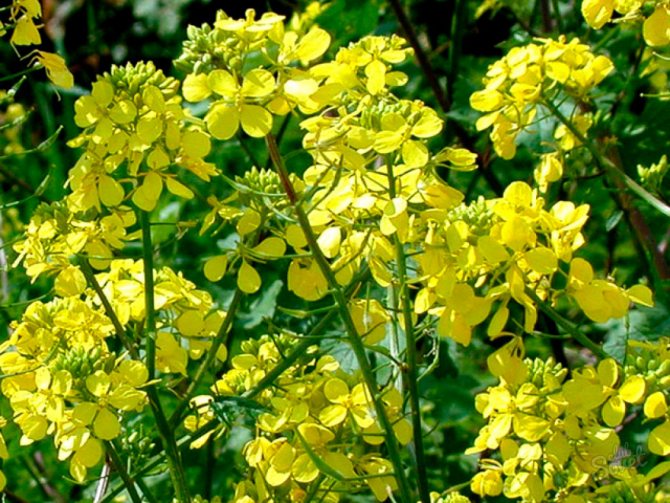

Mustard blossom
Leeks when to sow for seedlings
Mustard is prized as a highly digestible fertilizer. It sprouts quickly, builds up a large green mass (up to 400 kg per 1 hundred square meters).
The leaves and stems of the plant contain:
- Organic matter;
- Nitrogen;
- Phosphorus;
- Potassium.
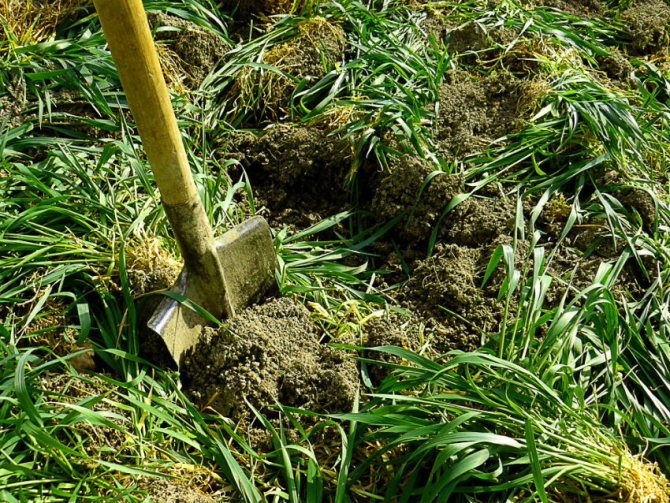

Burying green manure
The benefits of green manure:
- Enriches the soil with useful microelements (phosphorus, potassium, nitrogen), improves the fertile layer;
- Green manure is effective in restoring depleted soil. For 30-45 days, it releases organic substances and microelements that are assimilated in the soil;
- It is able to absorb hardly soluble forms of mineral microelements, making them readily available;
- Plays a role in improving the structure of the soil, it is used as a leavening agent in heavy soils. It performs the function of drainage, increases the air permeability of the soil, the three-meter tap root penetrates the ground and ventilates it;
- Prevents the washing out of nutrients during watering or rains. Horticultural crops protect the land from wind and water erosion;
- The plant secretes substances that prevent the growth of mold, is able to kill pathogenic bacteria, reduces the content of putrefactive microorganisms, scab in the ground;
- Siderat is used as a mulch layer;
- The place where the spice plant grows is protected from the attacks of pests (wireworm, slugs);
- During the flowering period, it is an excellent melliferous plant.
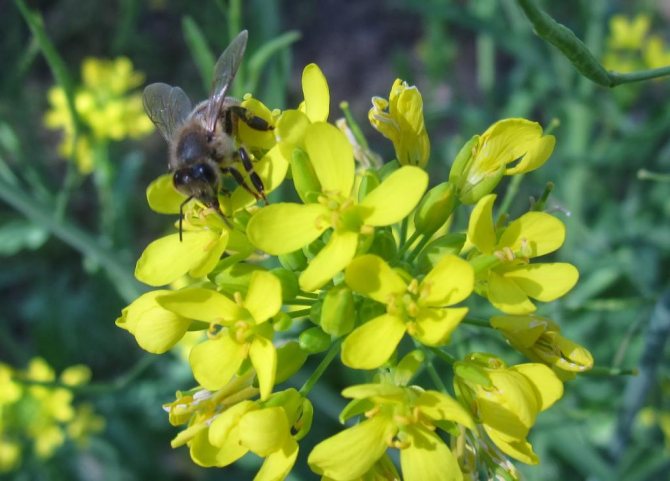

Honey plant
White mustard is used as green manure and significantly improves the quality and fertility of the soil. At the same time, it is considered an unpretentious culture, does not require a lot of effort and time to leave. The seeds are sold in garden shops (for example, mustard variety Kuban). They can be bought at low prices in the markets. After flowering, you can collect material for sowing for the next season yourself.
On a note. It is necessary to use mustard for fertilizing the soil together with other types of fertilizers: compost, rotted manure. There must be a sufficient number of microorganisms in the soil that will feed on the fertilizer. Mustard leaves and twigs are good food for earthworms. If there is no one to decompose the green fertilizer, then it will sour, and fungus and pests will appear in the soil.
White mustard in cooking
Did you know that young white mustard leaves are very tasty salad greens?
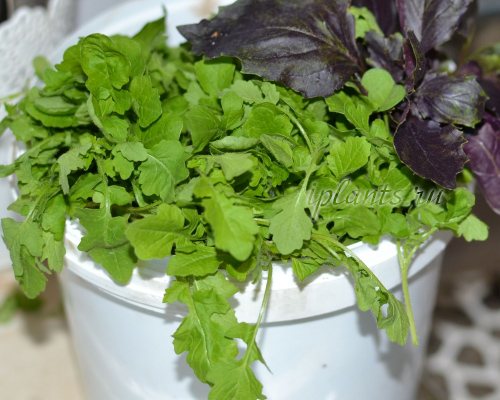

Just cut off the growing leaves (up to the cotyledons) with scissors. Do not try to break off - they will be pulled out of the ground with roots. Mustard leaves are fragrant, but not pungent, they can replace lettuce in recipes, they are not subjected to heat treatment. Store in the refrigerator in a jar of water or in a bag like other herbs.
Plant characteristic
The mustard grows rapidly, producing a large amount of greenery and fiber used for mulching the soil. Its roots dissolve well. They convert hard-to-reach nutrients into soluble nutrients for other plants, moving them from the lower layers of the soil to the upper ones. Mustard is often planted to cleanse the soil, as it kills the provocateurs of fungal infections.
White mustard is sown in the aisles of fruit trees and on land.
It is extremely useful in fields where potatoes, tomatoes, peppers, beans, beets, pumpkins, onions, zucchini, peas, garlic, cucumbers, and carrots will be grown.
Mustard is saturated from the soil with hardly soluble phosphates, increasing air exchange and preventing water from evaporating. There is a lot of nitrogen in its leaves.
Mustard is a reliable protector against:
- phytophthora and scab;
- fertile and slugs;
- wireworms;
- putrefactive microorganisms.
Mustard perfectly tolerates cold conditions, so it can be planted in the Moscow region and any region of Russia.
White mustard care
The plant is suitable for light (sandy), medium (loamy), prefers well-drained areas and on dense chernozem, clay (heavy soil) grows with difficulty - it requires a looser structure. Any soil acidity - it grows on acidic, neutral and alkaline types of soils, pH from 4.5 to 8.2, but optimally 6.5. Mustard can grow in partial shade or full sun, but only quickly under long daylight conditions.
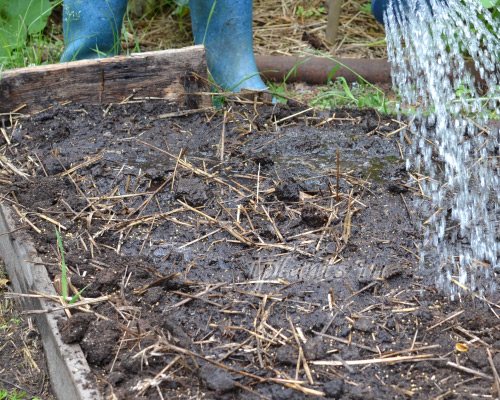

Mustard sprouts very quickly - under favorable conditions (temperatures above 10 ° C) sprouts appear in 3-5 days. But then they tend to grow slowly. Plants cover the ground in 4-5 weeks. The buds are visible about five weeks after germination. Yellow flowers appear after another week, and flowering is long, attracting bees, bumblebees and other pollinating insects.
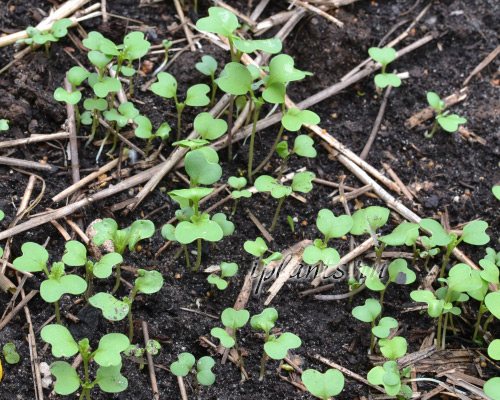

Mustard requires a lot of moisture for optimal growth - it has a shallow root system, so it does not grow so well in dry periods without watering (the soil should not dry out too much). No additional feeding is required.
Seed material
Good quality seeds of white mustard have a uniform light yellow color, must be firm, elastic, and must not be stained with gray and black mold. Among the yellow seeds, the presence of brown grains is permissible.
Seeds should be stored in a dry, ventilated area, with medium or low humidity.
To grow their seeds, some of the mustard seeds are planted in separate beds, preferably away from the main garden, so that unscheduled insemination of the area occupied by the main crops does not occur. When the sprouts sprout, they are thinned out, leaving 10 - 15 centimeters between the plants. The crop is harvested in autumn. The tops can be harvested and used as mulch.
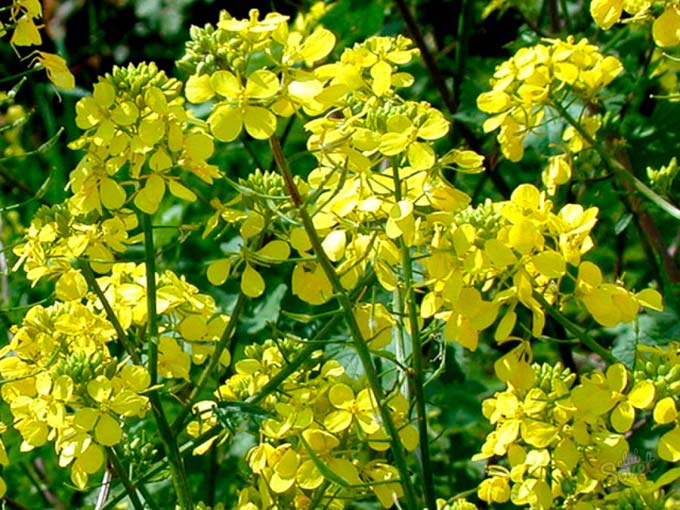

What can you grow a crop with?
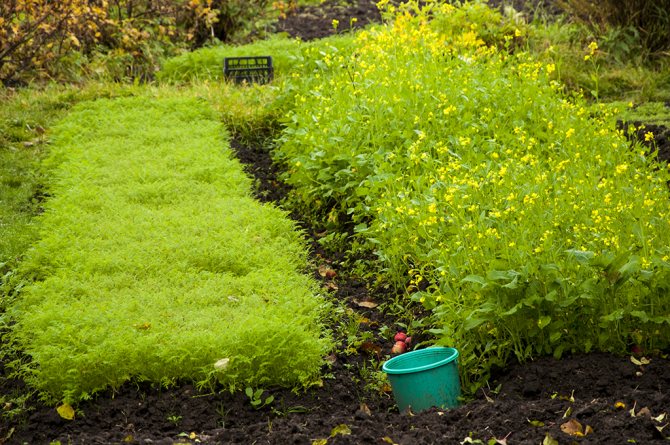

Mustard coexists well with many cultures
The culture coexists quite well with some other green manure: oats, clover and vetch. Of vegetable crops, solanaceous crops, carrots, and beets feel great in the soil after mustard. After harvesting potatoes or tomatoes, you can immediately sow mustard, and in mid-September you can sow oats and vetch to it. General plantings are left in the winter, and in the spring they are mowed and deepened into the soil.
The difference between spring and autumn sowing
Each planting method affects the soil and nearby plants.
Pros of spring planting seeds:
- Spring sowing allows you to nourish the soil with the necessary microelements before planting horticultural crops and to destroy parasites and pathogens in the ground;
- Seedlings inhibit the growth and development of weeds for almost 3 months.
The downside is the inability to plant spicy greens, cruciferous plants next to the garden bed.
Positive aspects of autumn planting:
- Rapid growth of seedlings - grow well even at low temperatures down to -5 degrees;
- The plant serves as mulch in winter, prevents soil freezing and dehydration;
- Due to the content of essential oils in the leaves and stems, the soil is disinfected;
- Autumn gives the opportunity for good plant growth, the root system fully develops and performs the function of loosening the earth;
- Erosion prevention.
Among the disadvantages of autumn planting are:
- Birds can peck on a significant amount of seeds if they remain on the surface;
- In frosty and little snowy winters, the plant may freeze out;
- In the spring, it is not recommended to plant cabbage, radish, lettuce in the place where the mustard grew.
Cleaning rules
For the process to be of maximum benefit, it is important to complete it correctly. For this, we take into account the following nuances.
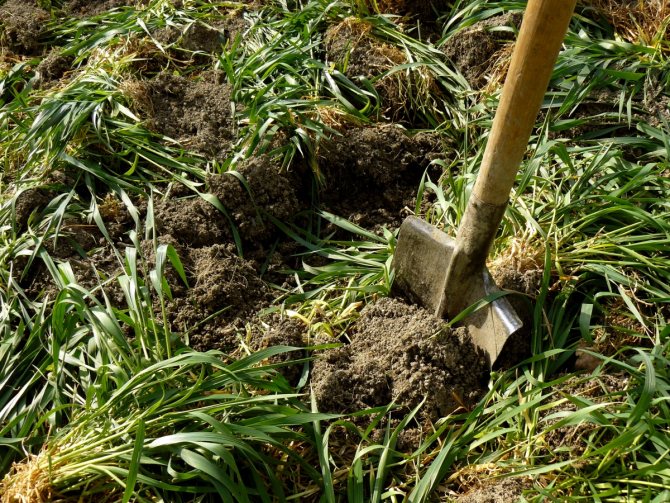

When harvesting, only the green mass is cut (mowed), and all the roots remain in the ground. It is convenient to use a flat cutter for this purpose. If mowing is done with a cultivator, it is important not to deepen the knives more than 2 cm into the soil.- It is necessary to cut it before the first color appears and without allowing the trunk to become coarse, otherwise the mass will rot for a long time. In addition, an excess of nitrogen in the ground is also undesirable, otherwise the roots of plants planted next to it will "burn".
- All beveled "tops" remain in place; they do not need to be removed. It is enough just to distribute it evenly over the surface. If they interfere with work, they are either dug up or put into a compost pit.
- It is advisable to cut it 10-12 days before the plot is planted with the main crop.
Do not harvest those Sederatic plants in the winter that were sown in the fall. Keeping them buried in the ground until spring will replace autumn plowing and provide a host of other benefits.

